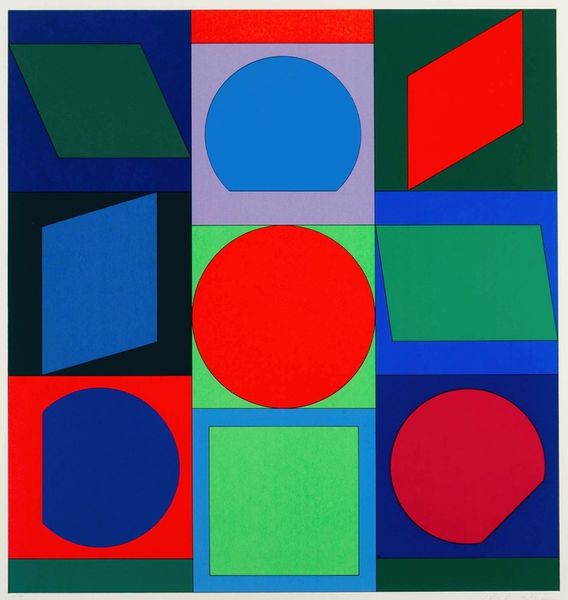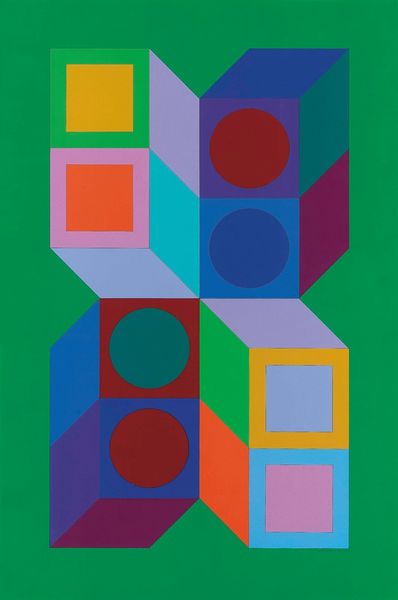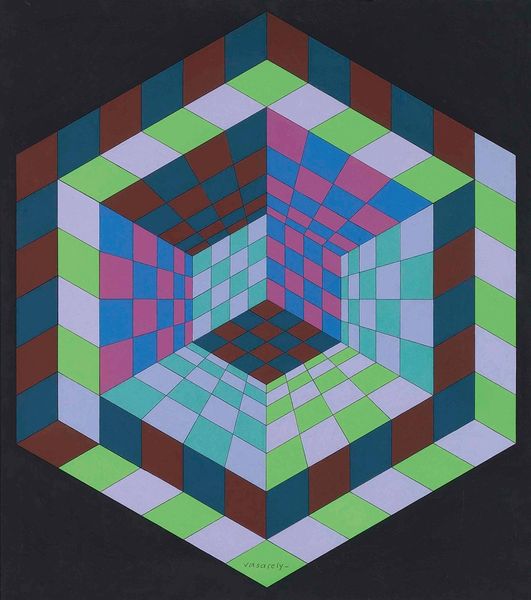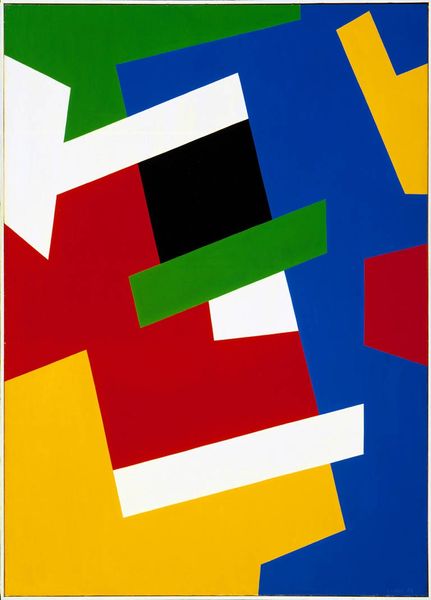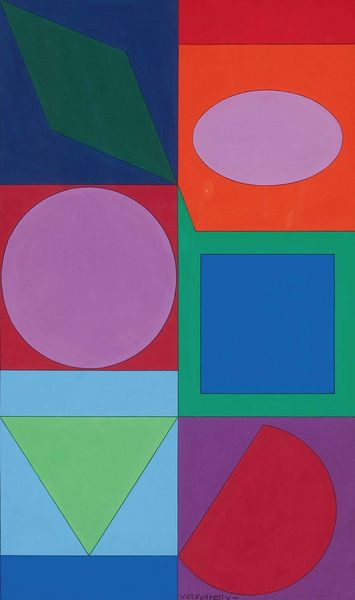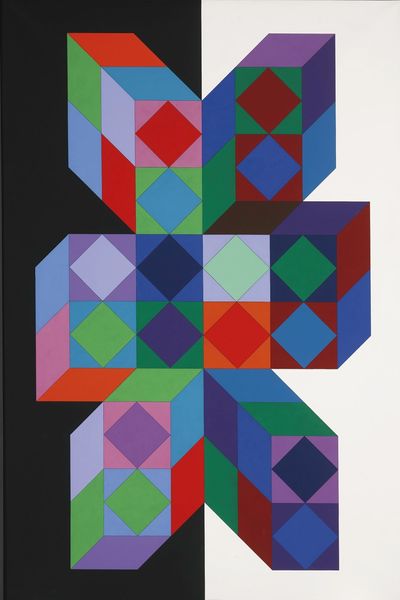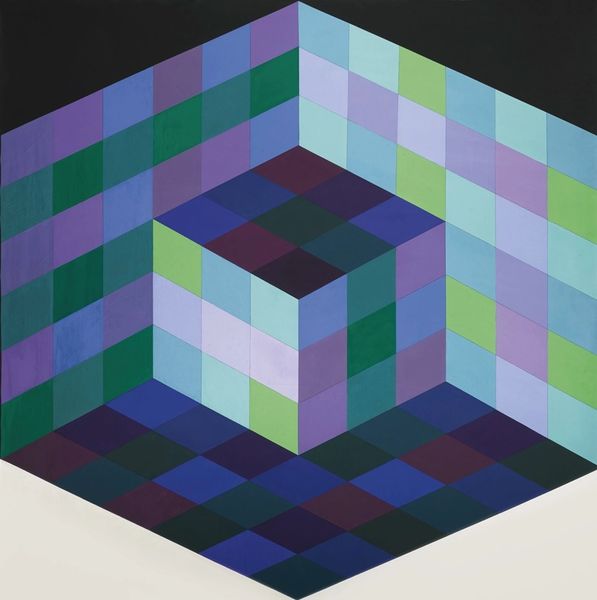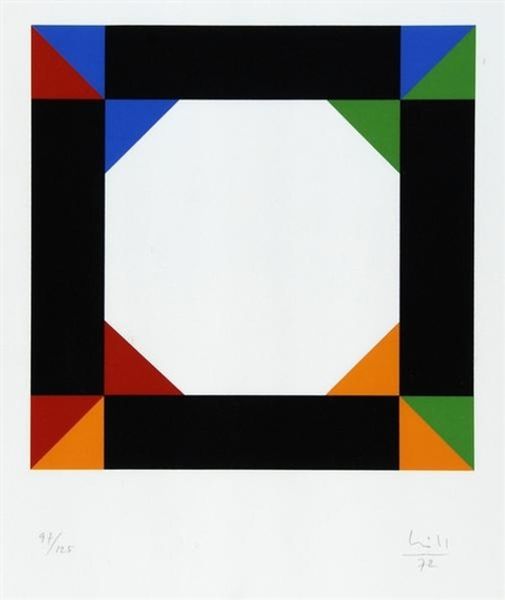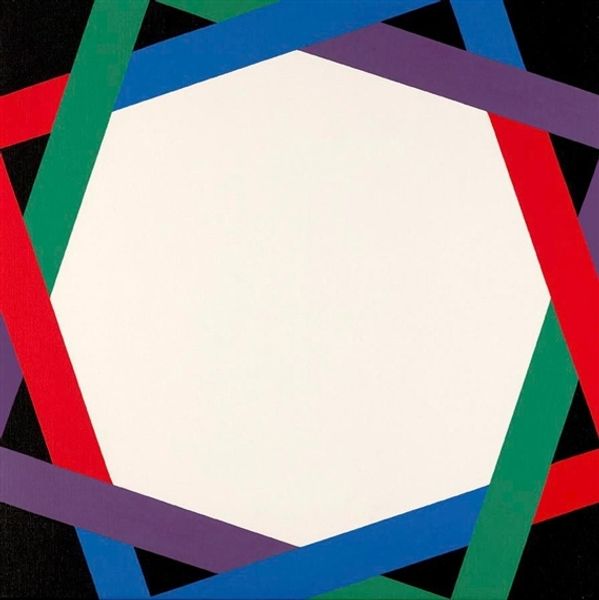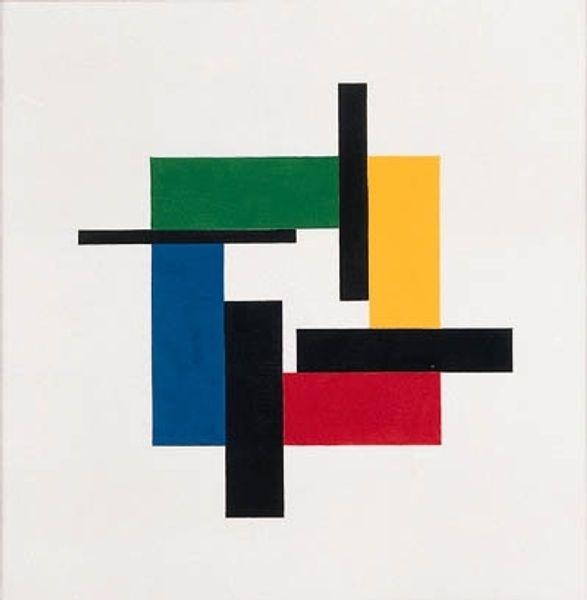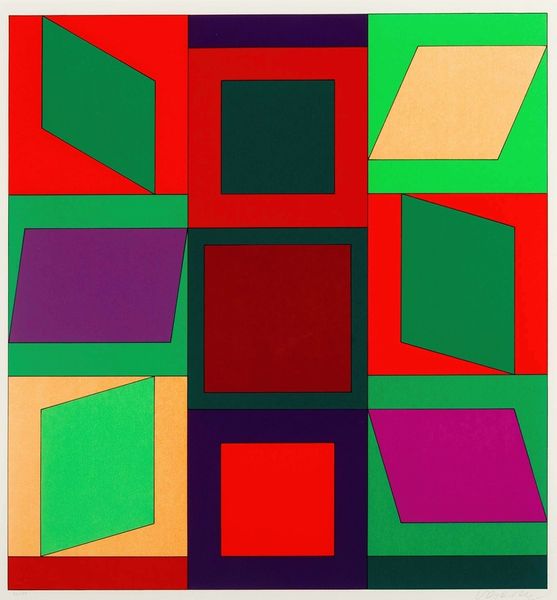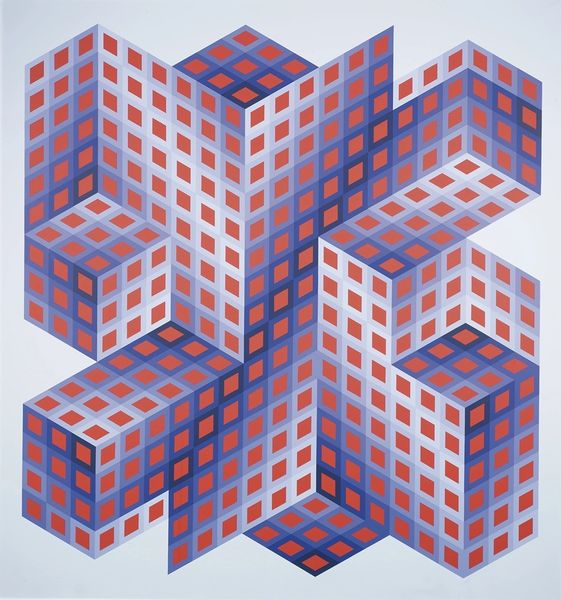
acrylic-paint
#
op-art
#
pop art
#
acrylic-paint
#
abstract
#
geometric
#
abstraction
#
pop-art
#
hard-edge-painting
Copyright: Modern Artists: Artvee
Curator: Welcome! Here we have Victor Vasarely's "Hatsoeg-5," created in 1970 using acrylic paint. Editor: Visually, I’m struck by how disorienting it is. Those hard lines and vibrant colours are strangely unsettling, like a Rubik’s Cube exploded and then partially reassembled. Curator: Precisely. Vasarely was a pioneer of Op Art, which explores the potential of geometric forms to create visual illusions and the sensation of movement. The colours here, so bold and primary, trigger strong responses—the kind often tapped in graphic design to create dynamism. Editor: Absolutely, the color pairings create afterimage effects, making it vibrate before your eyes. But it’s not just about trickery, is it? Surely there is more at play here than just retinal acrobatics? Curator: Consider the symbolism inherent in these forms. The cube, for example, represents stability, logic, and order. By distorting these familiar shapes, Vasarely challenges our perception of reality, creating a sense of uncertainty or the illusion of instability even as he uses familiar forms. Editor: The way he plays with positive and negative space reinforces that feeling. The black and white divide slices diagonally across the picture plane. Does this visual severing hold meaning as well? Curator: It might represent the conscious and unconscious realms, divided yet co-existing. These two states inform our reading and understanding of symbolic structure, and vice-versa. The title, 'Hatsoeg-5', is more than a mere label, becoming an identifier of the artist's intellectual pursuit in the symbolic weight of basic forms. Editor: Ultimately, I think it provokes questions about how we see, how we process visual information, and how much of our reality is constructed rather than inherent. It’s a brain teaser on canvas. Curator: I agree. Its lasting impact is less about the technique itself and more about Vasarely compelling us to examine our assumptions, questioning the nature of perception itself. This has an immense role in our everyday cognitive structures. Editor: Well put! It has certainly made me think. Thanks for taking the time.
Comments
No comments
Be the first to comment and join the conversation on the ultimate creative platform.

